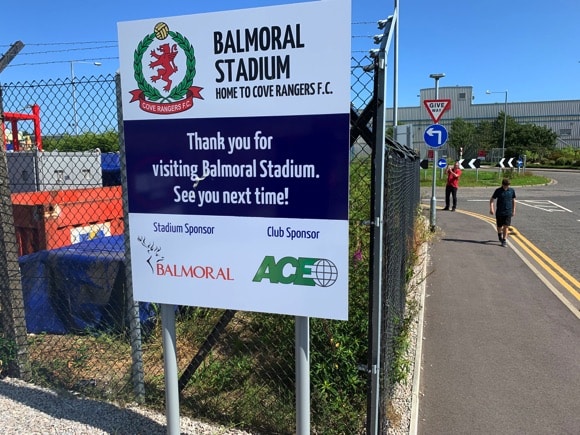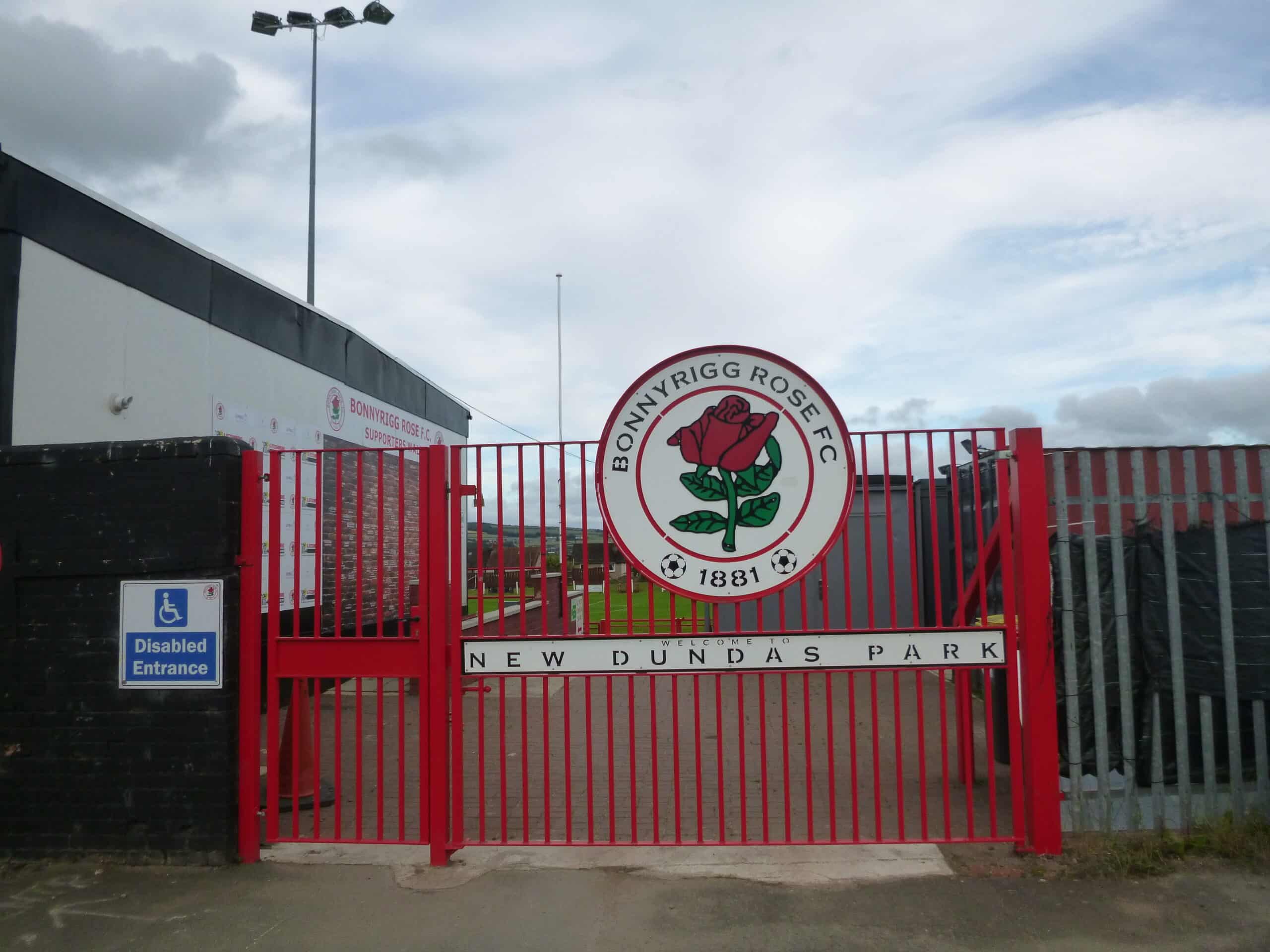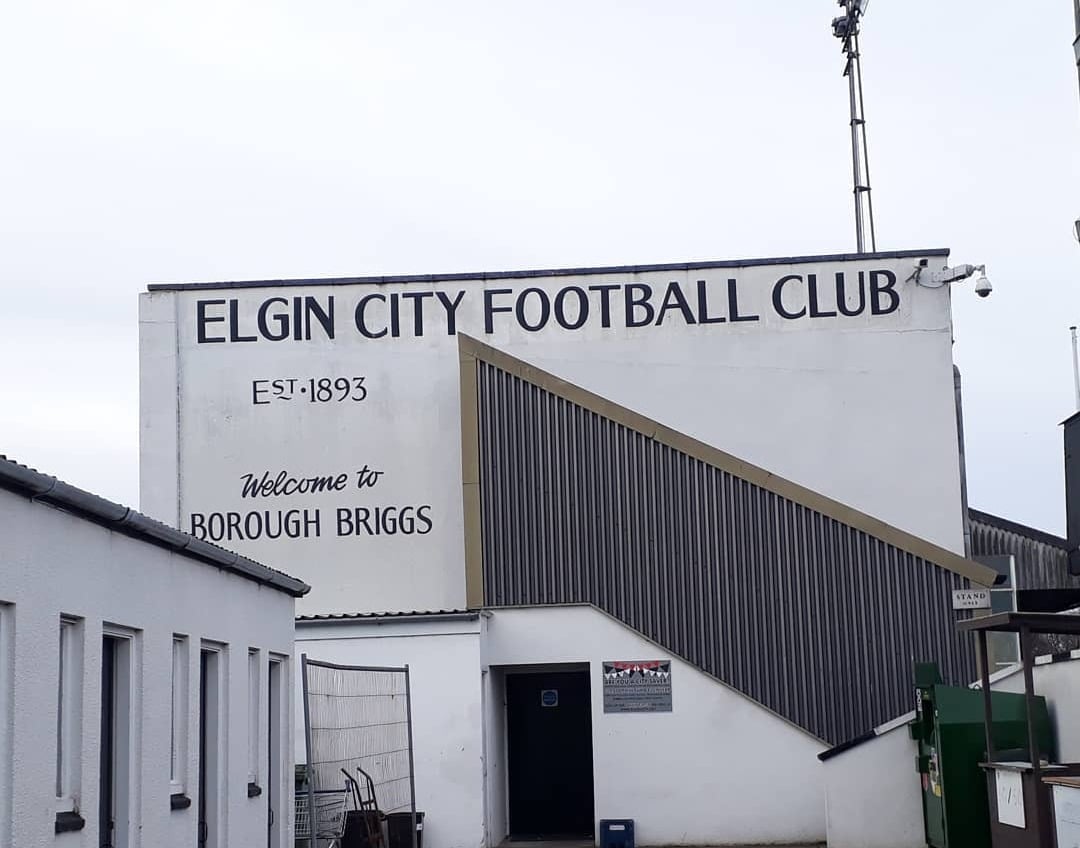A fan’s guide – the club from early doors to today
Cove Rangers needed only four seasons to rise from the Highland League to the Championship, promotion coinciding with the club’s centenary in 2022. While Cove’s stay in the second tier proved all too short, there’s every sign that the Toonsers will soon be back, making them the most successful team to have benefitted from reaching the senior Scottish League via the play-off system.
Introduced in 2015, the direct link between League Two and the newly created fifth tier of the Highland and Lowland Leagues has allowed Edinburgh City, Kelty Hearts, Bonnyrigg Rose and The Spartans to clamber out of the lower ranks.
No rise, however, has been as swift as the one achieved by ambitious Cove Rangers, based at the new-build Balmoral Stadium south-east of central Aberdeen.
Their route there has not been a conventional one. Apart from being the only club from the Highland League to make the leap to senior level, the Toonsers did not make waves in what’s known as the junior game in Scotland.

The equivalent of non-league in England, junior football was once a huge draw north of the border, around the same time that the FA Amateur Cup final was filling Wembley Stadium in the immediate post-war period.
Junior Cup finals would attract crowds of 70,000 to Hampden, to see fixtures involving Bonnyrigg Rose, among others. But not Cove Rangers, who remained resolutely amateur, their pitch a basic one named after the farmer who sold them the land by the railway line near Cove Bay Harbour, Allan Park.
In fact, these regular winners of the Aberdeenshire Amateur Division One (North) only dipped their toes in junior football for one season, in 1985-86 – but this allowed Cove to leapfrog up to the Highland League after only a year.
While Cove could no longer collect the many trophies associated with the game at this level in Aberdeenshire, such as the Bowie Cup, this did allow the Toonsers to compete with venerable clubs such as Inverness Thistle and Elgin City when the Highland League was expanded in 1986-87.

It also meant access to the Scottish Cup from 1989-90 onwards, ironically the last year that city rivals Aberdeen won the trophy. Cove Rangers gained valuable experience heading south to Dumfries to hold Queen of the South to a 2-1 win in the First Round. Intrepid Dunfermline fans have happy memories of their visit to Cove in 1995, the 4-0 win mingled with the hospitality in the social club at Allan Park as it shaped up to be a Highland League ground of decent standard.
By the time Rangers started winning titles, in 2001, 2008 and 2009, it could hold 2,500. The visit of Ross County in the Fourth Round of the Scottish Cup in 2008 attracted 1,200 spectators, treated to six goals, four from the visitors before half-time.
Behind Cove’s 20-year ascent from earnest amateurs on a windswept pitch by the North Sea to a credible force in Scotland’s non-league game were three key figures. The first was Alan McRae, the owner of a construction firm, who had been one of those players on the windswept pitch in the amateur days, before becoming Cove’s chairman, president and honorary president.

It was McRae who was behind Cove’s move to the Highland League, taking on roles as president of its governing body before joining the administration of the Scottish Football Association.
Twice vice-president of the SFA, at a time when the pyramid system was being proposed and introduced, giving Highland and Lowland League sides the chance to enter the Scottish League on merit, McRae was elected head of the game’s governing body north of the border in 2015. It’s little wonder then, that the main stand at Cove’s new-build Balmoral Stadium is named after him.
As McRae scaled the administrative ladder at the SFA, life-long supporter Keith Moorhouse became chairman of the club in the 1990s. Taken to games in the amateur days by his father, Cliff, Moorhouse set out to elevate his revered Cove Rangers to the kind of status they enjoy today. It’s been a journey built on hard work and long treks to Wick, Brora and Clachnacuddin, driven by the regular promise of the Scottish Cup and the long-term dream of the Scottish League.
And then there was John Sheran, a stalwart centre-back at Montrose in the 1980s, manager at Cove Rangers until 2009, and then again from 2014 to 2019, notching a win rate of nearly 72% in his second stint. He was later named their Director of Football.

In 2012-13, Cove Rangers kept Partick Thistle, soon to reach the Premiership, to a 2-1 margin before nearly 2,000 spectators at Firhill, Scottish Cup exploits followed by yet another Highland League title. Hitting over 100 goals that season, the Toonsers were beginning to outgrow modest Allan Park, despite improvements introduced by Keith Moorhouse.
That season was the last of the old league format in Scotland. The Scottish Professional Football League (SPFL) would then merge the Premiership with the three divisions below it, introducing League Two play-offs to create a direct pyramid system.
If Cove Rangers wanted in, Allan Park wasn’t an option. Though the club would finish way behind Brora Rangers in 2014-15, Moorhouse and his board sought to rectify the situation, finding a site in around the industrial estate of Altens, a mile inland from Cove Bay. Owned by the City of Aberdeen, it was a base for Royal Dutch Shell oil and gas, and a vast IKEA warehouse. Business was well and truly welcome.
Linking up with the Aberdeen-based global concern, the Balmoral Group, the club set about developing what would be known as Bobby Calder Park, named after the legendary Aberdeen scout who spotted some of the greatest talents to don a Dons shirt in AFC’s golden era.

In the first year of play-offs, Brora Rangers came within 15 minutes of reaching League Two. Though based at Inverurie, some 16 miles outside Aberdeen, the Toonsers aimed to go one better the following season, with young midfielder Blair Yule, son of former Cove player Raymond, showing sparkling form.
Despite a 0-5 reverse in the Scottish Cup to recent European participants Motherwell, Cove Rangers focused on pipping Brora to the Highland League title, earning a first shot at the play-offs. It would be a baptism of fire, as Lowland League champions Edinburgh City overran their northern counterparts in Inverurie, before becoming the first club to be promoted to League Two via the new pyramid set-up.
Losing out to Buckie Thistle on goal difference after the Moray side registered 130 in their GF tally, Cove notched up scorelines of 12-2 and 8-0 the following season to top the Highland League with an improbable goal difference of 127-22. Scoring for fun that 2017-18 season was Mitch Megginson, son of former Cove player Mike from the 1990s.
Always the right man in the right place, it was Megginson who immediately replied to Falkirk’s second-minute lead in the Fifth Round of the Scottish Cup, in front of nearly 1,700 at Inverurie. Under former Celtic midfielder Paul Hartley, the Bairns then took control in an impressive performance that didn’t go unnoticed by the opposition.

Preparing for a move to the £4 million Balmoral Stadium later in 2018, champions Cove sensed that their time had come. First, Megginson duly hit his 50th goal of the season in the 4-0 play-off demolition of Spartans. A vulnerable Cowdenbeath, long toying with the drop from League Two, would be next.
But the Blue Brazil surprised Cove by reversing a 1-2 scoreline at Central Park, Megginson hitting both goals in the first half. With one eye on the prize of League Two, Sheran’s men then took their eye off the ball to allow the home side to save face.
Cove Rangers would move into their new home in July 2018, still having to face the likes of Strathspey Thistle and Rothes FC in the Highland League. Despite the loss of new signing Jordon Brown, the former Aberdeen midfielder suffering a shocking head injury to curtail the curtain-raising fixture for the Balmoral Stadium against his old team, Cove Rangers showed league opposition no mercy that campaign.
Losing only one game and conceding a total of 12 goals in 2018-19, the Toonsers swatted aside East Kilbride in the play-offs, then attracted a still record crowd of 1,955 at Balmoral Stadium for the decider with Berwick Rangers. Megginson and former Aberdeen midfielder Jamie Masson claimed two of four unanswered goals as the home side set a near impossible task for the Borderers in the second leg.

Down in Berwick, John Sheran, in his last game in charge of Cove, urged his team to leave nothing to chance. Sure enough, Masson opened the scoring before ten minutes were up and the Highland League champions could begin celebrations when Jordon Brown, rushed to hospital at the start of the season, hit a second just after half-time.
Keeping the same core of ex-Dons but nabbing ex-Falkirk manager Paul Hartley to replace Sheran as he moved upstairs, the Toonsers monstered League Two from the off. Facing former play-off rivals Edinburgh City in the first game, Rangers whitewashed the visitors 5-0, an unstoppable Megginson grabbing the first two.
Hartley’s team then breezed through the league undefeated until October, Mitch Megginson finishing top league scorer on 24 as the pandemic stopped the contest in March 2020. Megginson, Masson and Brown had just enough time to hit five between them in the last game, a 7-1 drubbing of Stirling Albion away.

The League One campaign started much as League Two’s had, only delayed by the pandemic. Megginson hit the first two goals in the first game, a routine 3-1 win over East Fife. Cove won their first four matches before a higher grade of opposition, Partick Thistle, Airdrie and Falkirk, proved a stronger test.
It was Airdrie, in fact, who pipped Cove in the Championship play-offs, but only after extra-time in a dramatic five-goal battle. Again, Mitch Megginson finished the season as top league scorer, in a campaign curtailed by lockdown.
Putting together an unbeaten run from October right the way through to the end of the season in 2021-22, Paul Hartley’s men didn’t even require a play-off to conquer League One. The same core team of top league scorer Megginson, Masson and Yule dominated the division, the result being a third promotion in four seasons.
In the Scottish Cup, Hibs needed extra-time to overcome Cove Rangers in the Fourth Round, witnessed by nearly 6,000 at Easter Road.

With Hartley lured away for a disastrous spell at Hartlepool, Cove Rangers began their first Championship campaign with their usual win and brace from Megginson but then found the second tier very hard going indeed. Bizarrely, the return of Paul Hartley halfway through only seemed to make things worse, and Cove didn’t win a single game for two months from mid-February.
Relegation was a close-run thing, however, defeat at home to Greenock Morton pushing the club below bottom-placed Hamilton, when a point would have saved the day.
Back in League One, looking to rejuvenate the squad, Cove’s Director of Football John Sheran picked out Australia U-23 keeper Nicholas Suman and Falkirk’s young English striker Rumarn Burrell, who revelled in his new role.
A goal against his old club prefaced another at Montrose, before the former Coventry youth player was topping the league scoring charts. As Cove Rangers eyed up a play-off place around Christmas 2023, Burrell and the evergreen Blair Yule hit four between them in the 7-2 demolition of pyramid pioneers from way back when, Edinburgh City.





GROUND Guide
The field of dreams – and the story behind it



It’s not every day, or even every year, that a football ground gets built in Scotland, so the opening of Balmoral Stadium in 2018, to host a club then still in the Highland League, must be applauded for its ambition.
It is named after the huge global concern, based in Aberdeen, that came up with the wherewithal – £4 million for the construction and a substantial amount for the council-owned land here at Altens, once a bleak landscape of warehouses and depots, now facilitated by a four-star hotel with a pool and restaurant to cater to the many business travellers staying here south-east of central Aberdeen.
The 3,000-capacity Balmoral Stadium is passable for League One, about a third the size of most grounds in the current Scottish Championship. On the plus side, 2,000 of these places are now seats and there’s plenty of room for expansion. The main stand along the south sideline, named after the club’s influential former chairman and Scottish FA chief Alan McRae, straddles the halfway line, barely reaching further than the edge of the centre circle.

This is enough to contain a few hundred seats, covered, with standing space either side. There’s more covered seating in the more modest North Stand immediately opposite, again flanked by standing. A recent innovation are the stands behind each goal, pushing the total number of seats to two-thirds of the capacity.
While segregation was once quite lax, visiting supporters now use the east side of the ground, comprising the seats behind the goal and the adjoining standing areas along each sideline, home fans the west.
The all-weather 4G surface is another indication of the club’s ambitions: it’s the same dimensions as Hampden’s. Corporate facilities would put those at some Championship clubs to shame.
getting here
Going to the ground – tips and timings


To reach the Balmoral Stadium, take bus 3/3A (every 15-30mins) to Cove from Guild Street (stop M1) by the corner of Stirling Street, diagonally opposite Aberdeen station. You can either alight past the Shell garage at Souter Head Road just before the roundabout/Aberdeen Altens Hotel, or at the previous stop, Redmoss Park, closest to the Wellington Hotel and its family-friendly bar.
Journey time is 15-20mins. On Saturdays, services back to town on route 3 finish around 6.30pm – the 3A continues into the evening but doesn’t run on Sundays.
The sat nav code for Balmoral Park is Wellington Circle, Aberdeen, AB12 3JG. There’s a modest amount of parking at the ground and more spaces to be found around IKEA/Starbucks nearby, AB12 3QW.
getting in
Buying tickets – when, where, how and how much


Even when Cove Rangers were in the Championship, average gates were 1,000, a third of the capacity. In League One, it’s in the hundreds. Availability should never be a problem. For enquiries, contact the club on 01224 392 111 and at info@coverangersfc.com.
Tickets are distributed in advance online and sold in person on match days. You’ll pay £17 for a seat, £15 to stand, discounted £10/£9, youth prices £7/£6.
what to buy
Shirts, kits, merchandise and gifts

There’s a merchandise outlet in operation at the ground on match days. The current iteration of the home shirt is dark blue, the collar and adidas shoulder stripes in black. Away is stark white with black adidas stripes down the sides.
Coffee mugs and key rings mark the club’s centenary in 2022, while this may be the only club in Scotland to sell branded poker chips. Match programmes are £3.
Where to Drink
Pre-match beers for fans and casual visitors



A large pub & grill serving burgers, skewers, steaks and Sunday roasts, the Wellington Hotel near the Redmoss Park bus stop on the way to the ground also offers Peroni and Heineken on tap, and provides festival seating outside.
Further down by the next bus stop, Souter Head Road, the Aberdeen Altens Hotel features the neat, contemporary Coast and Keg bar/eatery, where guests can choose between a bar booth or restaurant seating. Food is superior (and pricier) when compared to the Wellington, but there are far more draught options (Guinness, Corona, Boddingtons, Innis & Gunn), not to mention whiskies (Auchentoshan Three Wood, Dalwhinnie 15 Year Old, Glenkinchie 12 Year Old). Open until midnight, daily.
A match-day Fan Zone between the main stand and the west goal contains a clubhouse bar, where visiting supporters are usually welcome.

















































